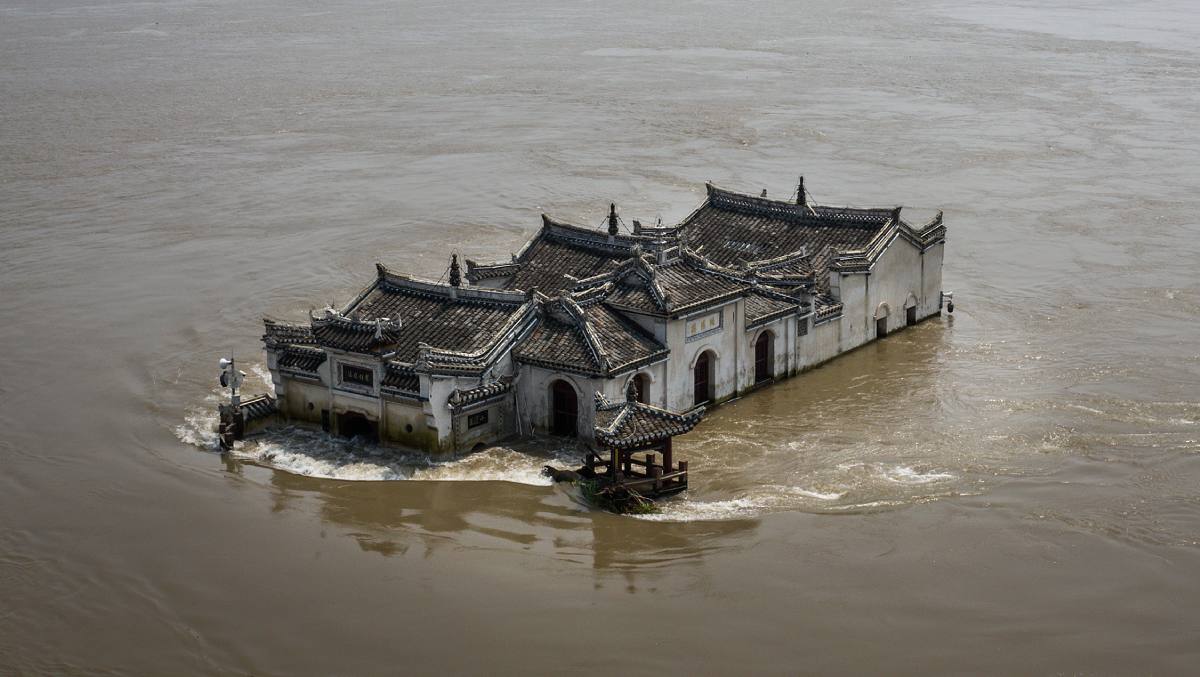
TOKYO -- A long-standing prediction for the world's most populous region is finally becoming a reality.
"There's a consistency in the models that climate change in Asia would translate into more floods, into more intense rainy seasons," said Homero Paltan Lopez, a water expert and researcher at the University of Oxford.
Such an alteration was expected to affect the vast area's seasonal monsoon, making rainfall during the wet season more concentrated with the dry season becoming longer. That is exactly what is happening and it is devastating many lives.
Nobiron, a 54-year-old widow living near the Brahmaputra river in northern Bangladesh, saw her home and all her belongings destroyed when floods swept through her village in June and July.
"I have never suffered such loss because of flooding in my life," said Nobiron, who uses a single name. "My ancestral homestead went down the river with all the things that I managed to save in my entire life. I have nothing left."
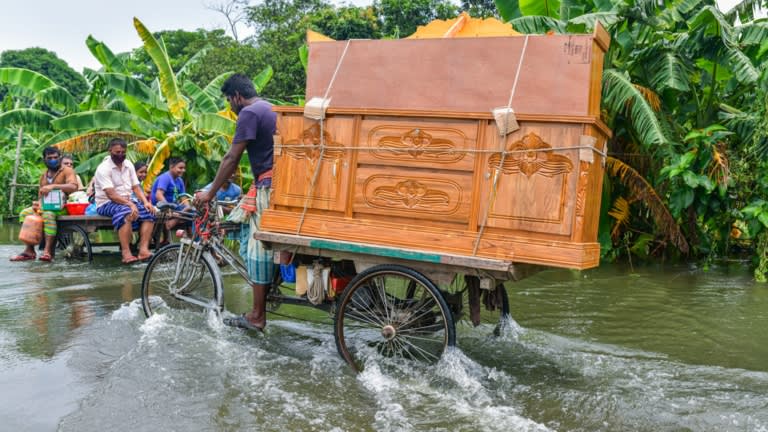
Bangladesh, a delta nation where monsoon flooding is endemic, has been hit especially hard this year. At one point, an astounding one-third of the country was underwater.
"In recent years the frequency of abnormal floods in the country has increased substantially, causing serious damage to lives and property," said Kaiser Rejve, director at humanitarian organization CARE Bangladesh. "The recent flood events indicate increased frequency and intensity of flood risk and river erosion in Bangladesh in the coming years."
But the phenomenon is regionwide. Since June, extreme rainfall has led to massive flooding in many parts of East, Southeast, and South Asia. In Japan, China, Indonesia, South Korea, Nepal, Pakistan, Mongolia and India. Millions have been displaced, and hundreds killed.
The economic impact is greater in Asia than anywhere else. A report by the McKinsey Global Institute in August highlights the risk.
"By 2050, 75% of global capital stock at risk from flooding will be in Asia," said Ruslan Fakhrutdinov, an associate with the institute. "The Indian subcontinent, and coastal Southeast Asian territories, they will be hit the hardest."
Other data paints a similar picture. A study in science journal Nature Communications last year estimated that 300 million people live in places where climate-triggered flooding will likely occur by 2050, with most of the vulnerable in Asian countries such as China, India, Bangladesh, and Vietnam.
A study in July in Scientific Reports found that while flood risk is growing globally, Asia's population density and preponderance of coastal communities mean that the majority of the high-risk population globally in the next 80 years will be on the continent.
"The science is getting more and more precise," said Abhas K. Jha, with the World Bank's Urban and Disaster Risk Management program in East Asia and the Pacific. "One thing that we know for sure is that wet places will get wetter, and dry places will get drier."
In China alone, 2.7 million people have been evacuated and an estimated 63 million impacted in 2020. A total of 53 rivers are currently at or near historic high water levels and dams in the Yangtze River basin are near or above capacity, making for the worst flooding in southern China since at least 1961.
Meanwhile, in South Asia, 17 million people have been affected this year and it's likely to get worse as heavy rainfall is predicted for many parts of Asia this season.
And while numbers are not as dramatic, Japan, no stranger to natural disasters, has seen increasingly dangerous weather. Record rains in Kumamoto Prefecture on the island of Kyushu killed at least 65 people in July. And parts of Chiba Prefecture east of Tokyo are still reeling from a huge typhoon in September last year that damaged more than 70,000 houses and knocked out electricity that led to days of blackouts affecting tens of thousands.
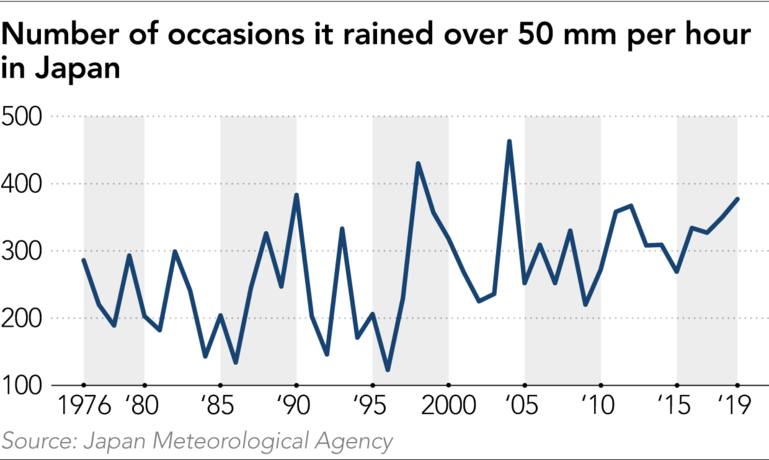
Climate science and modeling have improved so that scientists with increasing confidence are able to estimate how much particular weather-related events are either influenced by, or have their impacts altered, by climate change.
For example, when Hurricane Harvey flooded parts of Texas in the U.S. in 2017, scientists could calculate the quantity of rainfall was at least 15% to 19% higher due to climate change, which also increased the odds of such storms by three times.
While the risk of extreme rainfall may increase, it doesn't mean every year will see flooding.
"It's not just floods, but also a more variable or more unpredictable... water cycle," said Oxford's Lopez, adding that decision makers shouldn't be surprised if there is less rain during next year's monsoon.
Currently, most global attention on climate focuses on mitigation -- cutting greenhouse emissions -- to reduce the long-term impact of climate change. Asia accounts for the majority of gross global carbon emissions, a proportion that is growing.
"When it comes to global mitigation, Asia is uniquely positioned given its share of the global economy, and investments in the power sector," said Fakhrutdinov of the McKinsey Global Institute.
But for floods, in the short and medium-term mitigation has little impact as it's likely historical emissions will result in climate change-connected intense rainfall and sea level rises -- both of which make flooding more likely. There are also non-climate factors, such as migration and development, which affect the social and economic impact of floods.
"It's estimated that about a million people move to urban areas every week," said the World Bank's Jha. "That's explosive, and mostly unplanned" as well as " a big problem," he added. And making it worse, he said, is it mostly occurs in small- and medium-sized cities with the "least capacity" to respond.
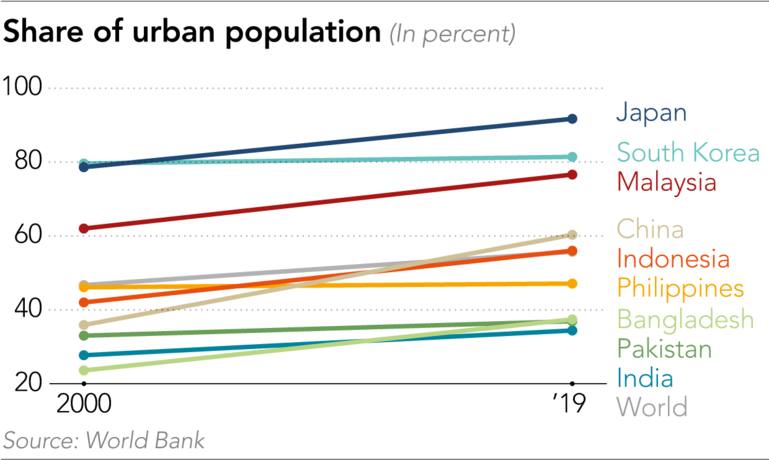
Asia's decades-long economic boom has spurred such migration. In total, the region's cities saw 200 million more residents in the 10 years from the year 2000. While that movement was most pronounced in China, increasingly it is Pakistan, Indonesia, and India that are seeing rapid urban growth. Thus, more people -- and infrastructure -- in high-risk regions will automatically make potential flooding more costly.
"Flood risk is also more people living in harm's way," said Charles Iceland, director of Global Water Initiatives with The World Resources Institute's Food, Forests, Water and the Ocean Program "Populations are growing, people are settling and building industrial infrastructure in likely locations where flooding could occur."
Growth of cities, and the increasing number of Asians living alongside coasts or rivers, means the number of people in flood-prone areas has risen.
Other human-driven changes, such as the widespread destruction for aquaculture of coastal mangroves -- which are known to reduce storm surges and the intrusion of seawater inland -- are caused by sinking land due to excessive groundwater discharge. And the loss of wetlands and other natural water sinks means many Asian cities are more prone to flooding even without factoring in climate change.

But alongside growing confidence in connecting floods and droughts to climate change is a boom in other data that informs responses, something that, until recently, was lacking.
"The combination of remote sensing from satellites and more computation power to process all that data, it's allowing us to get this water and climate data in front of decision-makers [and help them] see the crisis, see what's driving [it], and start to figure out what they can do to reduce the risk they are facing," said Iceland.
But questions remain over whether massive infrastructure projects like dams are the solution. Some of the most intense flooding took place in the basin of the Yangtze River -- which has one of the most massive water-management infrastructure on the planet, including the Three Gorges Dam, the world's largest.
"In China it's been a state policy for decades to intervene and control and mitigate floods in the Yangtze River catchment area," said Oxford's Lopez. "We have seen massive infrastructure, projects, dikes, and dams, of course." He called it "surprising" that floods are occurring in an area with such intense mitigation efforts.
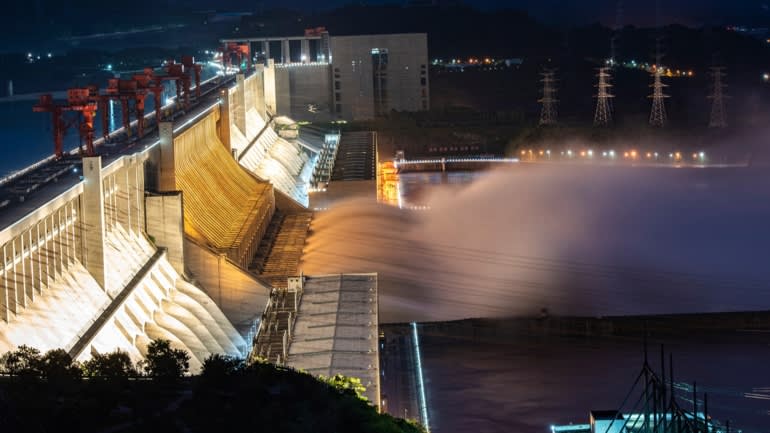
Therefore, Jha would be like to see a shift from what he calls "gray infrastructure," meaning dams, canals, and large-scale water management, to more "green infrastructure" focused on increasing the ability of cities to absorb water through landscape management, while also restoring ecological systems like flood plains, wetlands, and mangrove forests.
"The problem often is even when cities try to address flooding, there is an overemphasis on gray infrastructure," Jha said. "That's part of the solution, but not the whole solution. We have to have this balance between green and gray infrastructure, or water sensitive urban design."
How Asia responds to flooding could have grave repercussions for the future of economic growth in the world's most populous, and increasingly wealthy, continent.
The Manila-based Asian Development Bank estimates the cost of building gray and green infrastructure in Asia at a massive $800 billion by between now and 2030 -- but the cost of inaction might be greater. China's floods alone have caused $25 billion in damage this year, with no tally yet available for the rest of the region. And a study in Nature magazine says up to 12% to 20% of global gross domestic product could be exposed to flood risk by 2100 under a business-as-usual scenario.

Countries are expanding fiscal measures to buttress growth amid the pandemic, with some focus on the environment. In July, South Korea revealed a 73 trillion won ($63 billion) "Green New Deal" plan through 2025. Key objectives are decarbonization in the power sector and investing in energy-efficient buildings.
And while that is a good start, Jha envisions a bigger effort.
"We would like to see much more," he said.